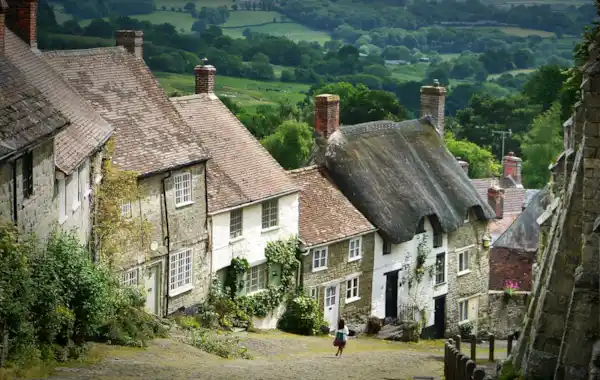Researching your family history doesn't mean being stuck behind a computer. If you can, get out and about for some hands-on family history, visit the places your ancestors called home, and really bring your family's past to life
You can bring a whole new perspective to your family history research by visiting the village or town that your ancestors called home. Rachel Bellerby leads the way...
Imagine walking down the streets your ancestors once trod, stepping into the church where they celebrated baptisms and weddings, and maybe even finding the old family home. All of these could be a reality when you visit the village where your ancestor once lived.
Before your visit
If your research has led you to identify your ancestor’s home village, consider taking a trip to that location – both to discover more about your ancestor, and for the sheer pleasure of seeing the places that would have been so familiar to them.
To make the most of your visit, see what you can discover before your trip. For example, what old buildings that your ancestor might have known (such as a village church, pub or schoolhouse) are still in existence? If the street where your ancestor lived no longer seems to exist, could it simply have changed its name over the years? Compare a historic and a modern map to see what you can find out. Even if you can’t locate the actual house or street, there are likely to be some landmark buildings still in existence close by, such as the village shop, market cross or war memorial.
You could also try to get an idea of how the village would have looked when your ancestor lived there. Old paintings or postcards can show local landmarks such as the high street, village church, etc, that bygone villagers would have known – Francis Frith has a great selection, for example.
Also check whether there are any trade directories in existence for the years your ancestor was there (local history libraries usually have copies) to see what businesses, schools and churches served the local community; perhaps you might even be able to identify where your ancestor worked if you’ve found his or her occupation on the 10-yearly census records.
Next, prepare a working file for use during your trip. This could include a copy of your family tree; notes on the relevant ancestor(s) such as date of birth, street where they lived and so on; information on street names or landmarks you’re hoping to see; the dates your ancestor was resident in the village and notes on any questions you’re hoping to answer during your genealogy visit.
You could also find out the location of the nearest museums, archives and local history libraries, which could form part of your research trip. While you’re in the area, you could take the opportunity to discover resources that aren’t available to you online. Are any of the older parish records for the village still kept at the church? If so, make contact with the minister and request an appointment to explore these further.
Try an online search to find out whether the village has a local history group or civic society and, if so, try emailing a request for information about the ancestor(s) in question, explaining that you’ll be visiting the area and hope to find out more.
Look online
Is anybody undertaking a one-place study on your ancestral home village? If so, they may be mentioned on one of these dedicated websites:
• The Society for One-Place Studies
• The One-Place Study Register
In the same vein, you could find out whether there are any history talks or meetings that you could attend while you’re in the area; perhaps a nearby family history society or local history group is holding a meeting which would coincide with your visit, giving you the chance not only to enjoy the talk but also the opportunity to meet local family history enthusiasts.
Making the most of your visit
Once you’re in the village, look out for blue plaques and information boards and talk to locals in the village shops and pub. Nearby museums may have displays of artefacts relating to local crafts and industries, and maybe even a library or photo collection. Local bookshops and museums often stock history books about the surrounding area that are difficult to find elsewhere.
Remember that some of the buildings your ancestors would have known may not now be fulfilling their original use. For example, the schoolhouse may now be a café, or the village hall could be the office of a small business. Your earlier background research using old photos and maps should help you here, as will a careful look at any buildings which appear to be from the period your ancestor was in the area.
If you’re staying in a family-run bed and breakfast or hotel, remember that your hosts will most likely have an in-depth knowledge of the area and its local families and may well point you in the direction of more information.
Most of all, enjoy your time in your ancestral home village – take in the atmosphere, the views, the buildings around you… you’re standing in the place your ancestors did, looking at the scenery they saw and the buildings that they passed on their way to work or school. What a special experience.
Top tips
• Do your homework beforehand to maximise your chances of discovering information during your visit
• Take photos of relevant buildings for your research file
• Photograph information boards in the village for later use
• Explore the surrounding towns and hamlets – your ancestor may have worked in these, or visited for market day, local festivals, and so on.
Originally published April 2018. Reviewed July 2022.








